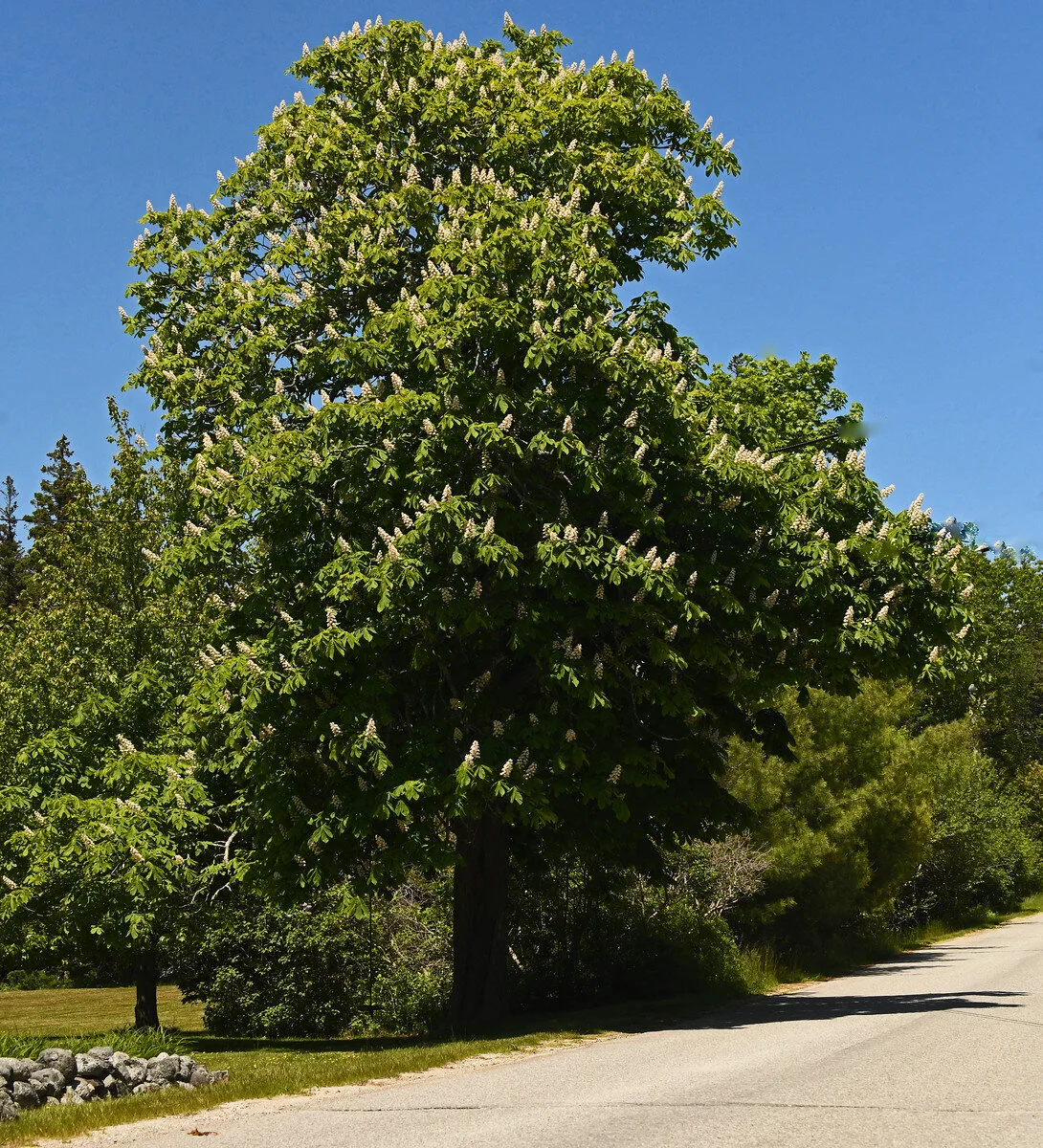That is, Blue Hill is not blue, except perhaps occasionally in a haze when everything is a bit blue.
However, historical reports tell us that the Hill had a real blue tint up through most of the 18th Century, when its commanding view of the area made it a landmark. In 1762, the Town of Blue Hill was formed at its base near the bay, which was named (you guessed it) Blue Hill Bay.
The Town, ironically, was formed in large part to make it easier to cut down many of the tall conifer trees that gave the Hill its blueish hue. Among other reasons, fine, straight trees were in demand for masts and other parts of England’s Royal Navy before the Revolution. The Hill’s principal rock, granite, which helps turn the hump gray near the top, also was in demand and was another major reason that the Town was formed.
Nonetheless, as you see above, Blue Hill remains a landmark and commands a lush green area in the summer, when tourists come; not to cut it, but to join residents and walk its trails. (Blue Hill, Maine)
































































